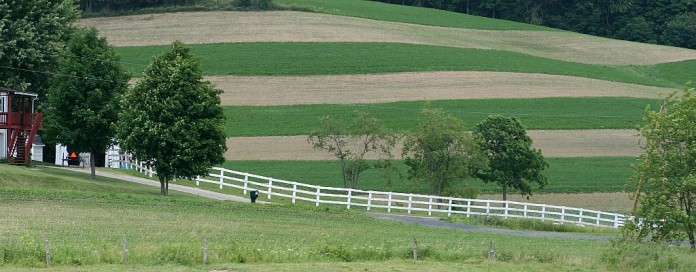The cold winter months provide an opportunity to spend time thinking about your successor. Determining who will take over the management and ownership of your farm is not an easy or simple process, but one that takes time and planning.
Scheduling time to meet with your advisers (lender, attorney, accountant, veterinarian, Extension professional, etc.), family and prospective successors is critical. Alan Miller and Craig Dobbins from Purdue University have developed the Planning for Farm Succession — Step-by-Step Checklist and Action Plan for Management Succession document.
Below is a summary of key points all farmers should consider when planning for the orderly succession of their farm business.
Step one: Gather information and ideas and discover expectations
- Have you attended an introductory workshop/seminar to gather ideas?
- Have you read articles on farm succession planning?
- Have you discussed general succession issues with family, friends, advisors and other farmers?
- Have you selected someone (family or nonfamily) to guide the process?
- Have you decided to involve/hire a facilitator?
- Have you identified professionals who can assist with the process?
- Have you completed a financial analysis of your business? Does it provide sufficient cash flow? Will it support the additional members? Will it be financially viable in the future?
- Have you evaluated family loving costs? How might these change?
- Have you discussed everyone’s goals, objectives, and expectations?
- Has the family assessed the compatibility of everyone’s goals, objectives, and expectations?
- Have you examined the technical and human aspects of retirement?
- Do you hold regular family meetings?
- Have you considered:
– Fair and equitable transfer of ownership?
– Who will take over? When? How?
– How will decision making be changed? - Have you acquired basic knowledge of:
– Methods of transfer
– Financing
– Tax implications
– Legal implications
Step two: Generate and examine/evaluate options
- How will the senior generation prepare for and secure their retirement?
- What can be done to treat children fairly and equitably?
- Have you evaluated business arrangements?
- Retirement issues — where will money come from? How will the retiring generation be involved?
- Who will the successor(s) be? How will management and labor be transferred?
- How do you want to involve off-farm family members, if at all?
- How will you treat nonfamily employees, if applicable?
- If you have a proposed plan where are you in terms of obtaining buy-in?
- Have you started to write the plan?
- Do you have a timeline for implementation?
Step three: Make preliminary decisions and check with experts
- Have you started using your list of options to make preliminary decisions?
- Management control? Retirement? Succession?
- Have you put together a rough draft of your options?
- Have you assembled a team of succession planning professionals?
- Have you met with your transition team?
Step four: Decide on and develop the plan
- Have you created and written down draft ideas and potential plans that incorporate your preliminary decisions?
- Have you decided which plan best achieves what family members want to see happen?
- Have you reviewed the plan with family and asked for feedback?
- Have you met with each of your advisors to discuss your ideas and get their feedback?
- Has the family sat down with the advisers to discuss the plan?
- Have you taken the advisor’s ideas and advice and incorporated them into the plan?
- Have you finalized the plan? Is it in writing?
- Does you succession plan contain:
– A retirement plan?
– A plan to transfer management and labor?
– A plan for transfer of ownership?
– A contingency plan?
– An exit plan? A timeline for implementation? - Does your plan address on-farm vs. off-farm heirs and future generations?
- Is there flexibility to allow changes in the future?
- Has there been an open process for farming and nonfarming children to review the plan?
Step five: Implement the plan
- Do the parties at interest understand what will be required to implement the plan?
- Have any family members started to put the plan into place?
- What has been done? What still needs to be done? When?
- Has property been transferred?
- Is there a timeframe for review of and adjustments to the plan?
Remember to give credit where credit is due — enjoy your achievements.
Succession planing is not an easy process and there is no “recipe” that all farms can follow.
However, using the items outlined in this checklist will keep you focused. For some, many of these items can be checked off the list. For others, I hope it serves as a motivator to get the succession planning process underway.
Utilize your team of advisers to help guide you through the process in developing a plan that addresses the needs of everyone involved and contributes to the long-term success of your farm business.













